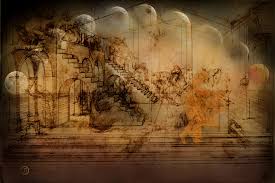The digital revolution isn’t coming—it’s here. Traditional brands that once dominated physical spaces now face a critical crossroads: adapt or become irrelevant. The transformation from brick-and-mortar legacy to digital powerhouse isn’t just about building a website; it’s about reimagining your entire brand identity for the modern consumer.
The Digital Imperative
As renowned branding consultant David Aaker once said, “The brand is a promise, and the promise must be kept in every digital touchpoint.” This truth has never been more relevant. Traditional brands carry decades of trust and recognition, but translating that equity into digital success requires strategic finesse.
Consider how McDonald’s transformed from a simple burger chain to a lifestyle brand. Their mobile app doesn’t just facilitate orders—it gamifies the dining experience with rewards, personalized offers, and exclusive content. They didn’t abandon their golden arches legacy; they amplified it through technology.
Start with Your Story, Not Your Strategy
Before diving into platforms and pixels, successful digital transformation begins with narrative. Traditional brands have rich histories, but online audiences crave authentic, relatable stories. Nike didn’t just sell shoes online—they sold inspiration. Their “Just Do It” ethos translated seamlessly from print ads to Instagram stories, creating a community around achievement rather than products.
The key is identifying your brand’s core emotional trigger. Are you about comfort (Coca-Cola), innovation (3M), or reliability (IBM)? Once you nail this, every digital decision becomes clearer.
Platform-Specific Brand Evolution
Different platforms demand different versions of your brand personality. LinkedIn requires professional authority, Instagram needs visual storytelling, and TikTok demands authentic vulnerability. Successful transformation means being consistently you while speaking each platform’s language.
Take Old Spice—a brand once associated with grandfathers suddenly became the internet’s favorite comedy brand. They didn’t change their product; they changed their voice. Their viral campaigns proved that traditional brands could be as agile and relevant as startups.
Data-Driven Brand Decisions
Marketing guru Seth Godin reminds us that “Marketing is no longer about the stuff you make, but about the stories you tell.” But online, those stories must be informed by data. Traditional brands have an advantage here—decades of customer insights that, when properly analyzed, reveal digital transformation opportunities.
Starbucks exemplifies this perfectly. They transformed their loyalty program from simple punch cards to a sophisticated mobile ecosystem. By analyzing customer behavior data, they created personalized experiences that increased both frequency and spend. Their app became the brand experience itself.
The Minimalist Advantage
In our cluttered digital landscape, minimalism isn’t just aesthetic—it’s strategic. Traditional brands often carry visual baggage from decades of design evolution. Digital transformation offers the perfect opportunity to strip back to essentials.
Apple’s journey from colorful computer company to sleek lifestyle brand demonstrates minimalism’s power. Their digital presence mirrors their product philosophy: elegant, intuitive, and focused. Every website element, social media post, and digital campaign reflects their “less is more” ethos.
Community Over Customers
Brand consultant Marty Neumeier wisely noted, “A brand is not what you say it is. It’s what they say it is.” Online, “they” means your community. Traditional brands must shift from broadcast marketing to conversation facilitation.
Harley-Davidson mastered this transition by creating digital spaces where customers share stories, photos, and experiences. They transformed from motorcycle manufacturer to lifestyle curator, letting their community define the brand narrative.
Practical Transformation Steps
Audit Your Digital Footprint: Before building, understand what exists. Google yourself. Check social mentions. Identify gaps between your intended brand image and online reality.
Choose Quality Over Quantity: Rather than being everywhere, excel somewhere. Select 2-3 platforms where your audience genuinely engages.
Consistency Across Chaos: Develop clear brand guidelines that work across all digital touchpoints. Your Instagram post should feel connected to your email newsletter.
Measure What Matters: Track engagement, sentiment, and conversion—not just followers or likes.
The Future is Now
Digital transformation isn’t a destination; it’s an ongoing evolution. Traditional brands that embrace this mindset—viewing digital not as a separate channel but as an integral part of their identity—will thrive.
The brands that successfully make this leap don’t abandon their heritage; they amplify it through technology. They remain authentically themselves while becoming more accessible, more engaging, and more relevant than ever before.
Your digital transformation starts with a single question: How can technology help us better serve the customers we’ve always cared about? Answer that, and the rest follows naturally.


